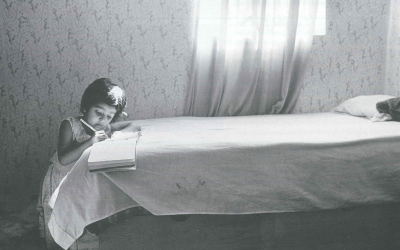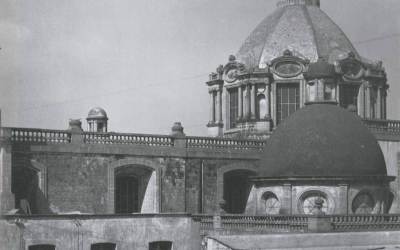Editor’s Letter: The Children
A blue whale spurts water joyfully into an Andean sky on my office door. A rainbow glitters among a feast of animals and palm trees. Geometrical lightning tosses tiny houses into the air with the force of a tropical hurricane.
These images are drawings given to me over the years by children who form part of my extended family—Aldo Miguel, Carlitos, Santiago, Jenni Paola, Ana Micaela and many other children of Latin America.
They remind me of deep friendships formed there and also with Latin@ immigrants to the United States. They remind me of the happiness—and fragility—of childhood.
The children’s drawings and wisdom have helped me gain a perspective on Latin America as deep as any book could provide. A former DRCLAS Visiting Scholar from Mexico recently recounted how his young daughter asked him at Christmas, “If Santa Claus is a man, how come it’s Santa (the feminine form for “saint in Spanish)?” While he was grasping for an answer, she bombarded him with yet another question: “And who elected him anyway?”
Innocent questions, I think. Yet, they are already profound queries about gender and citizenship. As many articles in this Winter issue of ReVista illustrate, children and teens form their ideas about society at an early age. In turn, they form society. They are our future.
We’ve tried to take a look here at the changing nature of childhood in Latin America and beyond. The tape recordings of Rebecca Sawady in El Salvador and the visual art collected by Ellen Calmus, Moira Gannon and João Kulsac bring together the children’s own voices and images.
The voices of adults here are those who have dedicated themselves to working with or studying children and teens. Perhaps it is natural that in developing societies or in transitional situations like immigration, researchers focus on the problems of the underprivileged. Many of the hemisphere’s children still do not enjoy basic health, education and well-being.
In the process of searching for photos for this issue, I asked a few of my friends from Peru, Colombia and Mexico for photographs of their children to publish. “No way,” they unanimously said, “That’s tempting kidnappers.” With globalization and security concerns, the physical spaces for middle- and upper-class children in Latin America are also changing. As Cindi Katz points out in her article on globalization, the child as consumer is as much of a concern as the child as worker.
It’s the nature of journalism to focus on problems. I look at the drawings on my office door and think of the joy and mischief of childhood. And I hope that amidst the problems and challenges for children and teens in Latin America and beyond what is discussed on these pages, the happiness and frivolity, joy and spunk, and the wisdom and creativity of children shine through. The children’all of them’are our future.
Spring 2008, Volume VII, Number 3
Related Articles
Editor’s Letter: Democracy
Ellen Schneider’s description of Sandinista leader Daniel Ortega in her provocative article on Nicaraguan democracy sent me scurrying to my oversized scrapbooks of newspaper articles. I wanted to show her that rather than being perceived as a caudillo
Editor’s Letter: Monuments and Counter-Monuments
Cuba may be the only country on the planet that sports statues of John Lennon and Vladimir Lenin. Uruguay may be the first in planning a full-fledged monument to the victims of the Covid-19 pandemic.
Editor’s Letter: Cityscapes
I have to confess. I fell passionately, madly, in love at first sight. I was standing on the edge of Bogotá’s National Park, breathing in the rain-washed air laden with the heavy fragrance of eucalyptus trees. I looked up towards the mountains over the red-tiled roofs. And then it happened.




